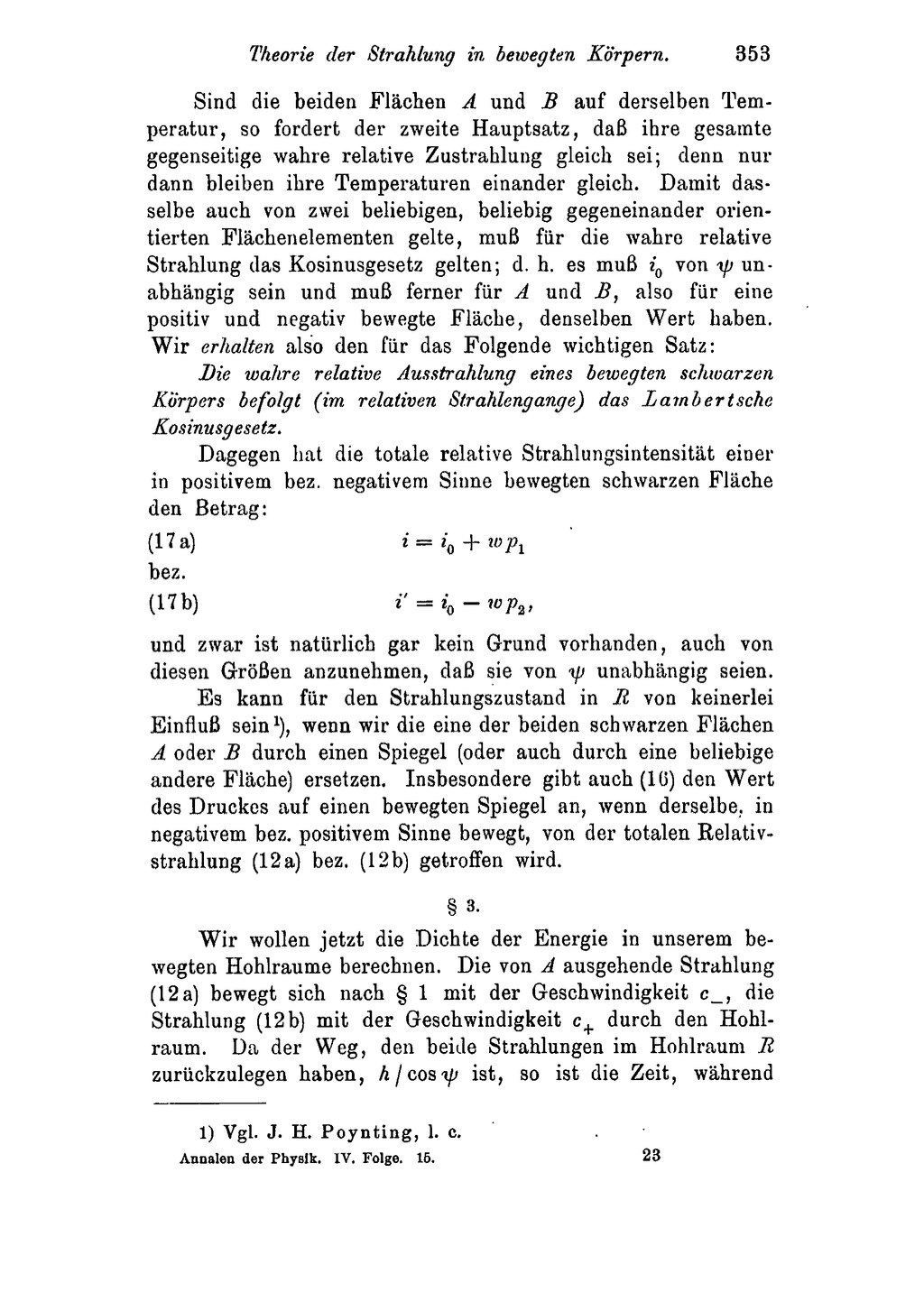If both surfaces and are of the same temperature, then the second thermodynamic law demands that the total, mutual, true, and relative radiation shall be the same; because only then the temperatures remain mutually the same. In order, that the same is also valid for two arbitrary surface elements which are arbitrarily oriented, the cosine law must hold for the true relative radiation; i.e, must be independent of , and furthermore it must have the same value for and , thus for a positively and negatively moving surface. Thus we obtain the theorem (which is important for the following):
The true relative radiation of a moving black body, obeys (in the relative beam path) Lambert's cosine law.
On the other hand, the total relative radiation intensity of a black surface moving in the positive or negative sense, has the amount
| (17a) |
or
| (17b) | , |
namely there is no reason to assume that these magnitudes are independent from as well.
It can be of no influence in ,[1] when we replace one of the two black surfaces or by a mirror (or also by any other surface). Especially, also (16) gives the value for the pressure upon a moving mirror, when (moving in the negative or positive sense) it is hit by the total relative radiation (12a) or (12b).
§ 3.
We now want to calculate the energy in our moving cavity. The radiation (12a) emanated from is moving with velocity according to § 1, and radiation (12b) is moving with velocity through the cavity. Since the path to be traveled by both rays in cavity is , then the time
- ↑ See J. H. Poynting, l. c.










